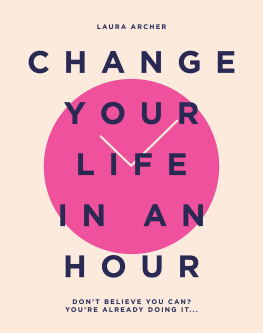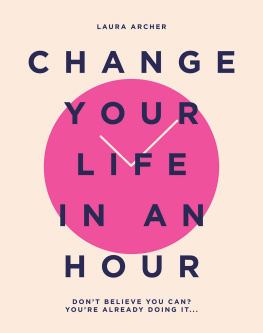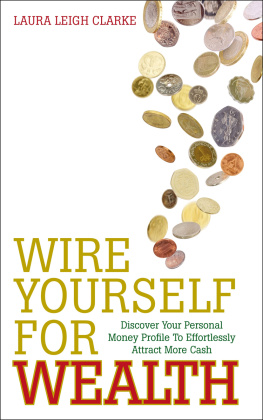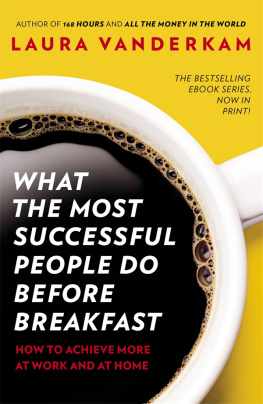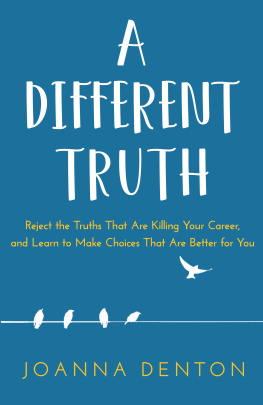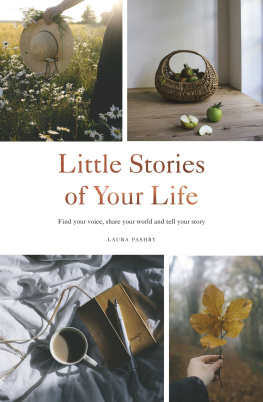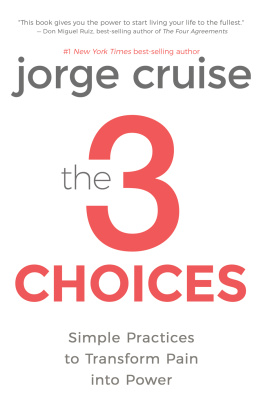
ACKNOWLEDGMENTS
I am hugely indebted to the many thinkers mentioned in this book who have expanded my understanding of the world, bringing fascination, clarity and reassurance at times when Ive most needed it.
This book also wouldnt exist without the great enthusiasm, encouragement and patience of my agent Louise Lamont, editor Cline Hughes, and the fantastic team at Quadrille!
Finally, I can never go without acknowledging the endless sparks of joy that are my family and friends who make optimizing every second of my life far too easy.
PUBLISHING DIRECTOR: SARAH LAVELLE
SENIOR COMMISSIONING EDITOR: CLINE HUGHES
SENIOR DESIGNER: EMILY LAPWORTH
ILLUSTRATIONS: SARAH FISHER
HEAD OF PRODUCTION: STEPHEN LANG
PRODUCTION CONTROLLER: SINEAD HERING
Published in 2021 by Quadrille, an imprint of Hardie Grant Publishing
Quadrille
5254 Southwark Street
London SE1 1UN
quadrille.com
All rights reserved. No part of this publication may be reproduced, stored in a retrieval system or transmitted in any form by any means, electronic, mechanical, photocopying, recording or otherwise, without the prior written permission of the publishers and copyright holders. The moral rights of the author have been asserted.
Cataloguing in Publication Data: a catalogue record for this book is available from the British Library.
Text Laura Archer 2021 Illustrations Sarah Fisher 2021 Design and layouts Quadrille 2021
eISBN 9781787135512
First mind-blowing fact: the brain consists of about one trillion cells with 100 trillion connections between those cells. Try to visualize that volume all inside your head.
Second mind-blowing fact: though its hard to say, at a rough estimate, scientists suggest the brain is handling 10 quadrillion instructions per second. This puts our normal perception of multi-tasking into perspective, and also explains why we still know so little about the brain and how it functions: there is just so much going on in there, every second of the day.
What we do know, though, is that our brains (and minds) deal with pretty much everything, so we need to look after them. Luckily, were in a fortunate place in our history for doing this. In the last few years, awareness around the importance of good mental health has risen to a point where most people are comfortable talking about it as part of daily conversation. In fact, one of the more positive consequences of the Covid-19 lockdown was that it made us check in with our friends and family and ask about their mental health on a regular basis. The communal crisis made us unafraid to admit that managing our mental health is a daily undertaking.
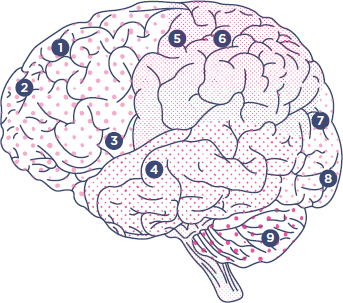
FRONTAL LOBE
Eye and head movements
Behaviour and emotion
Speech
TEMPORAL LOBE
Hearing
PARIETAL LOBE
Basic movements
. Sensation
OCCIPITAL LOBE
Visual recognition
Vision
CEREBELLUM
Balance and muscle coordination
OUR MINDS NEED WORKOUTS
We all have mental health, because we all have minds; just as we all have physical health, because we all have bodies. As our bodies go through good phases and bad phases based on internal and external factors, so do our minds. And just as we can help our bodies through things like diet and exercise, its also possible to work on supporting and benefiting our minds based on what we input to them.
The aim of this section of the book is to get to know how your mind works, so that on days when those anxiety-inducing thoughts that go around and around in your head pop up, youll know how to move away from them; or on days when you need a bit of fresh stimulus, youll have a few places to seek it from.
Effectively this is mindfulness. I used to think that mindfulness was contemplating nature or meditating. Its true that these activities are part of mindfulness, but the actual act of mindfulness is gaining an awareness of how your mind works, so that you know when it might be useful to contemplate nature or meditate. It might also include knowing when its useful to call a friend or paint a picture. For this reason, there are two parts to this section: engaging with your mind (self-awareness), and engaging with other minds (expanding your thinking).
INSIDE YOUR HEAD
When you have a thought, an electrical signal passes back and forth between the various neurons responsible for that thought. The brain is always trying to become more efficient, so every time two cells communicate, the brain builds a connection that makes it easier for them to do so in the future.
While this is good, because it develops our knowledge network and our ability to react or respond to something quickly, at times this can also have its downside. When we think or experience the same thought over and over again, the connection that has been formed between certain cells becomes more established and therefore more prevalent. Think of it like a shortcut worn into the grass by numerous walkers, who decided not to stick to the longer pathway. Unless you make a conscious decision to stick to the pathway, you will always take the shortcut, because it will get you to your destination more quickly. This can result in rigid thinking: when you have told yourself (or been told) something for so long that a thought pattern becomes so firmly established you find it hard to think or see things in any other direction. Unfortunately, this is particularly harmful if the thought is a negative one.
Luckily, research has shown that throughout life the connections between neurons are continuously growing and changing. This is referred to as neuroplasticity: neuro from neuron, and plasticity meaning the ability of something to change or be moulded. When you practise learning or thinking in new ways, you create new pathways. This is an option that we have throughout our lives: no matter how old you are or what your situation is, you can change the structure of your brain and improve the way you think it just takes practice! The first part of this section is therefore dedicated to getting to know your own thought patterns, so that you can understand how to control and change them.
OUTSIDE YOUR HEAD
Every thought we have is based on something we have learnt from an external source. This might be a physical event, a person very close to us such as a parent, sibling or friend or something far, far away, such as a movie, book or a religious teaching. In the latter case, it might be separated from us by centuries or even millennia. Our learning can be both conscious and subconscious; directly downloaded, or assimilated over time. However we came to know or believe something, it got into our minds through sensory experience. In other words, everything internal has an external beginning.
The more of this external stimulus you put into your brain, the broader our understanding of the world and our place within it becomes. It makes us more confident, more sociable and more creative. Artists are typically encouraged to expand their experience of the world as much as they can, so that their work becomes more complex and fascinating. Our minds are just the same: we need to keep feeding them in order to keep them healthy and growing. The second part of this section looks at engaging with other minds, so that you can expand your way of thinking and avoid becoming too introspective.
A BIT ABOUT MENTAL HEALTH CONDITIONS
Next page
